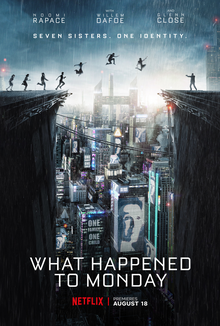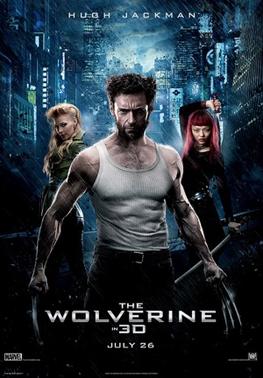Atomic Blonde
Atomic Blonde is David Leitch's solo directorial debut. Leitch spent most of his career as a stuntman and stunt coordinator, but he got the opportunity to co-direct a few scenes in the film John Wick. It should come as no surprise when I tell you that Atomic Blonde is a stylish action movie with fantastic fight scenes and impressive choreography.

Charlize Theron is a gorgeous leading lady who plays the stone-cold main character without losing the empathy of the audience. She's sexy when she wants to be and powerful when she needs to be. James McAvoy plays a reckless, loud, arrogant, yet charismatic counterpoint to Theron's cool, calm, controlled super-spy. Eddie Marsan exudes an air of desperation any time his character is on screen - whether he's speaking a line or not. John Goodman sets aside his standard paternal role to play a menacing, overbearing figure. Sofia Boutella plays a mysterious, alluring, but vulnerable character. Every actor played out their parts admirably with relatively little dialogue; even their breathing was on point.

The most immediately appreciable aspect of Atomic Blonde is the fight choreography. Every punch and kick is expertly timed and synchronized with the precision of a Russian ballet. This is what happens when you let a stunt coordinator direct a whole movie.

The fight choreography goes hand-in-hand with the sound design. It's not enough to say that this film has a 1980s synth-pop new wave sound track; we need to talk about how the sound design serves the fight scenes and the overall film. Every note, every beat, and every melody are synchronized with the fighting. The tempo of the music selection matches the tempo of the fight scenes and the revving engines in the car chases. Hat's off to the foley artists who designed the perfect sound effect for each car crash, battered jaw, broken bone, and bloody fist.

That impressive sound design and fight choreography complement the brilliant cinematography in Atomic Blonde. Let me tell you about one scene in particular: Near the end of the second act, the handicam (handheld, counter-balanced camera) follows Charlize Theron in a long, continuous shot. She fights her way up and down a building, killing KGB agents, dodging bullets, and kicking ass. The intimate camera gives the audience a sense of urgency in the violence. The handicam stays on Theron as she fights from one room to the next and continues to follow her as she escapes the building and hijacks a car. The same shot remains unbroken in the ensuing car chase scene. The audience feels planted in the passenger seat right next to Theron. The logistics of organizing all this action from all the different players in multiple locations into one unbroken shot boggles the mind.

Perhaps the most brilliant use of cinematography in Atomic Blonde is in the lighting. The palette of red, blue, and green light is used intentionally to paint a stylish image on screen. The filmmakers use these lights not just to please the eye, but also to convey mood, to hint at hidden subtext, and to supplant superfluous dialogue.

Speaking of dialogue, when the characters in Atomic Blonde speak, they tend to keep it brief. There's little need for exposition in this film after the introductory framing devise is established. Frankly, the plot isn't thick enough to require much exposition. Most of the plot is traditional spy movie formula. In fact, there are points in the third act when the filmmakers require the audience to be familiar with spy movie conventions to really understand where the plot is heading. Whether or not this is a problem depends on what the audience desires from viewing Atomic Blonde.

If you want a movie to tell an engrossing, original, dramatic story, then Atomic Blonde is not the film for you. If you want a movie to be a stylish audio-visual spectacle of art and violence, then Atomic Blonde will be one of your new favorites.

Atomic Blonde will be a future cult classic. I guarantee it!

















